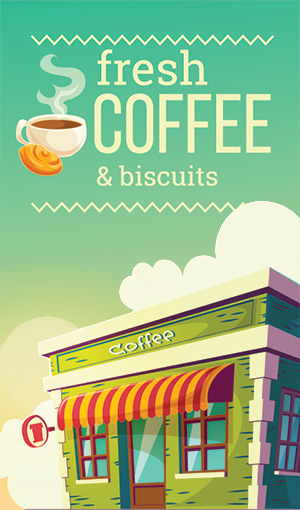Plastic shot molding has actually become the foundation of modern-day production, allowing for the reliable and affordable production of a wide variety of plastic components and products. From everyday things like toothbrushes and playthings to complicated auto components and medical devices, injection molding solutions have actually transformed sectors worldwide.
Behind every effective shot molding procedure lies the art of shot mold making. These molds, carefully crafted to precise specifications, work as the foundation for generating top quality shaped plastic components. Proficient mold and mildew makers use advanced methods and innovative modern technology to produce mold and mildews that can endure the roughness of automation.
Efficient shot molding style is extremely important to the success of any kind of job. It’s not nearly creating a mold and mildew; it’s around design remedies that enhance part quality, decrease production expenses, and minimize time to market. By leveraging CAD software program and incorporating style for manufacturability principles, designers can improve styles to meet the unique demands of each job.
Understanding shot molding costs is important for job preparation and budgeting. Various variables affect the last expense, including mold and mildew intricacy, material choice, part quantity, and production cycle time. By very carefully evaluating these variables, suppliers can make enlightened choices to maximize expenses without sacrificing top quality.
Overmolding, a process that entails molding one material over an additional, provides many benefits in product design. From improving hold and convenience to developing multi-color or multi-material parts, overmolding opens a globe of possibilities for designers and engineers. By purposefully incorporating products, manufacturers can improve both the performance and visual charm of their products.
When it pertains to outdoor applications, choosing the appropriate plastic product is essential for guaranteeing longevity and long life. Design materials especially formulated for outside usage, such as UV-resistant ABS or weather-resistant polycarbonate (COMPUTER), offer premium performance in severe atmospheres. By thinking about variables like exposure to sunlight, wetness, and temperature fluctuations, designers can make informed decisions to extend the lifespan of outside items.
Abdominal muscle is a flexible thermoplastic extensively utilized in injection molding because of its superb influence resistance, dimensional stability, and machinability. From consumer electronics to vehicle components, ABS uses a balance of toughness and price that makes it a popular option for a variety of applications. Nevertheless, it’s important to consider its constraints, such as bad resistance to UV radiation and certain chemicals, when selecting it for specific projects.
Plastic molding resistances play a vital duty in guaranteeing the dimensional precision and uniformity of molded parts. Tight tolerances are essential for parts that require specific fit and performance, such as clinical gadgets or aerospace components. By very carefully calibrating mold and mildews and checking procedure criteria, makers can attain the degree of accuracy needed for their applications.
Polycarbonate (PC) supplies a special mix of residential or commercial properties, including high impact strength, transparency, and heat resistance, making it suitable for a vast array of applications. From safety goggles to electronic screen screens, PC supplies toughness and optical quality that other products can not match. However, its vulnerability to damaging and its greater cost contrasted to other plastics must be meticulously taken into consideration in item layout.
Picking the right material for clear components is essential for preserving optical quality and reducing visual issues. Polycarbonate, acrylic, and certain kinds of transparent ABS offer superb openness and can be brightened to attain a beautiful coating. By comprehending the optical buildings and processing demands of each product, suppliers can generate clear parts that fulfill the finest standards.
Family members mold and mildews, which allow for the simultaneous manufacturing of several component styles in a solitary mold, offer significant advantages in regards to effectiveness and expense savings. By settling manufacturing right into a solitary mold, producers can lower tooling costs, enhance production processes, and lessen product waste. Family members molds are especially advantageous for jobs entailing multiple parts that are set up with each other in the final product.
Reliable shot molding style needs cautious consideration of various factors, including component geometry, draft angles, wall surface thickness, and gating choices. By enhancing these criteria for manufacturability and moldability, designers can minimize manufacturing issues and boost part high quality. Utilizing functions like ribs, bosses, and fillets can improve architectural integrity and efficiency while lowering product use and cycle time.
Insert molding, which entails placing metal or plastic components into the mold tooth cavity before shot, supplies many benefits in regards to part consolidation, enhanced stamina, and reduced assembly costs. By encapsulating inserts within the shaped component, producers can develop robust assemblies with integrated attributes, such as threaded inserts or electrical ports. Insert molding is widely used in markets varying from automobile and electronic devices to medical devices and consumer items.
Moldflow analysis, an effective simulation tool, permits designers to forecast and maximize the molding procedure before manufacturing starts. By replicating the circulation of molten plastic within the mold and mildew cavity, analysts can determine potential problems such as air traps, weld lines, and sink marks, and enhance process parameters to mitigate these flaws. Moldflow analysis aids makers minimize pricey experimental models, decrease time to market, and make certain the high quality and consistency of shaped parts.
Shot molding products encompass a large range of thermoplastics and thermosetting polymers, each with its distinct residential or commercial properties and characteristics. From asset plastics like polyethylene and polypropylene to design resins such as nylon and PEEK, material option plays an essential duty in establishing part performance, cost, and manufacturability. By matching the product residential or commercial properties to the details requirements of the application, suppliers can enhance part design and manufacturing procedures.
Chrome plating offers a resilient and cosmetically pleasing surface for plastic parts, boosting their look and rust resistance. From auto trim elements to consumer electronics, chrome-plated plastics add a touch of style and sophistication to a large range of items. By making use of innovative plating techniques and sticking to stringent quality criteria, makers can attain flawless chrome coatings that satisfy the highest sector criteria.
Sink marks, anxieties or impressions on the surface of molded parts brought on by unequal air conditioning or shrinkage, can diminish the look and performance of the final product. By enhancing component style, gate area, and cooling network layout, designers can minimize the danger of sink marks and achieve uniform part high quality. Using sophisticated molding methods such as gas-assisted molding or conformal cooling can further minimize sink mark concerns and improve surface area coating.
Shot molding is a complicated procedure that can run into different issues, consisting of brief shots, flash, warpage, and sink marks. By understanding the root causes of these concerns and executing rehabilitative actions such as adjusting procedure criteria, modifying component layout, or maximizing mold and mildew geometry, producers can settle manufacturing issues and make sure the uniformity and top quality of molded parts.
By encapsulating a substrate with a layer of thermoplastic material, suppliers can produce multi-material parts with enhanced hold, padding, or attractive features. Overmolding likewise provides challenges such as material compatibility, bonding stamina, and increased manufacturing complexity.
Outside applications put special needs on products, needing resistance to UV direct exposure, dampness, temperature extremes, and mechanical stress and anxiety. Design plastics such as ABS, COMPUTER, and polypropylene offer remarkable weatherability and sturdiness, making them optimal options for exterior products ranging from yard devices to play area equipment. By choosing the suitable product and maximizing component design, manufacturers can make sure the long-term efficiency and dependability of outside items.
Selecting the right mold product is critical for achieving ideal performance and durability in injection molding. Elements such as product solidity, thermal conductivity, and rust resistance influence mold and mildew toughness, component high quality, and production effectiveness. Top notch mold steels like P20, H13, and stainless steel deal remarkable wear resistance and polishability, guaranteeing smooth production runs and constant component high quality.
why overmolding , a flexible polycarbonate known for its impact resistance, durability, and affordability, locates extensive use in different industries. From automotive interior trim components to customer electronics housings, ABS provides an equilibrium of homes that make it ideal for a large range of applications. Nonetheless, its limited chemical resistance and tendency to warp under high heat need to be considered when making parts for details applications.

Molded Parts Design: Strategies for Success

Recent News
-
選擇高品質藻油的購買指南
30 June 2025
-
利用Telegram的安全功能保护你的账户
30 June 2025
-
TG中文优化:使用建议和技巧
30 June 2025
-
三高的社會經濟因素:不同收入層次的影響
30 June 2025
-
Decorative Glass: Where Artistry Meets Architecture
30 June 2025
Riverside City Hall
8353 Sierra Avenue • Riverside, CA 87 535
Phone: (907) 350-7400 • Monday – Thursday, 8:00 am – 6:00 pm
Recent News
Quick Links
A vibrant city nestled against the Mountains.
Copyright © 2023 - fansnextdoor.com All Right Reserved.